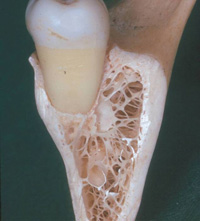This article outlines several of the most vital practice management tools, which when implemented will instantly transform your office culture and open the way for unprecedented business expansion and growth. Yes, dental practice is a business as many of you may or may not have discovered the hard way. However, the most fundamental and critically important element of a successful practice is often the least understood and most neglected your people.
As practice management consultants and coaches who work exclusively on-site or in small, intimate groups on an intense week-to-week basis, we devote fully 50% of our time to the personal development, understanding, and handling of staff. Because they drive the practice and make or break whether or not your office systems, procedures, and policies are effortlessly and flawlessly implemented to serve you and your patients, it is vital that you truly understand and use the following distinctions and tools in the ongoing development of your practice.
GET A TRUE AND COMPLETE UNDERSTANDING OF THE CURRENTLY EXISTING STATE OF YOUR PRACTICE AND ITS CULTURE
The derivation of the word culture comes from the French colere, meaning to tend to or to cultivate. Cultivate in this case means to cause to grow by special attention or by studying, advancing, and developing to refinement. Thus, your practice culture is determined by how much attention you focus on your people in their training, integration, development, and advancement as individuals in support of your purposes and goals. How effectively you understand, know, and can inspire your staff will ultimately determine the level of practice growth you can achieve.
You therefore need to start by simply surveying (and afterwards interviewing) people with a direct, straight-to-the-point questionnaire to get a clear and accurate assessment from their perspective of how they view themselves, their teammates, and you and your associates in relation to the practice. Some sample questions should be: What is your position or what post do you hold in the office? What do you do and what are you responsible for? Does your work interest you? Do the duties you perform align with your position in the office? How do your responsibilities contribute to the practice? What barriers do you run into while doing your job? What about your job works properly and what needs improvement? What works about the practice as a whole and what needs improvement? Where do you feel you need improvement? What works about the doctor(s) and what needs improvement? What could be changed to make your job easier and help you get your job done more effectively?
All are powerful questions that will assist you in gathering common themes and in the identification of potentially detrimental personal and practice blind spots that often go undetected. Conversely, this discovery process will also allow you to recognize what is right and working about you and your practice, which is just as important so that you don’t change or deviate from your successful actions as a leader and entrepreneur.
During the survey and interview process you must be sure to create a safe space for your people to be completely honest without fear of repercussion or resentment. The truth may hurt, but without it you cannot make changes. Resisting, justifying, defending, and rejecting your staffs reality, whether you can readily understand where they are coming from or not, will invalidate them and create upsets and resentment. Sometimes it is just best to shut up and listen it can be very therapeutic and beneficial in the end.
However, you will never get total candor without acknowledging how you have been in the past, cleaning it up, and giving permission in the present to allow full, uncensored expression from your people. You could position these surveys and interviews as follows: In the past I may not have been as open as I am now to hearing the truth and to be willing to make changes. I have realized that there may in fact be things about me and the practice that need attention and improvement, and I need your help in handling these areas. So I want you to know you have my full permission to share with me, without fear of repercussion or resentment, what you see needs handling. I want you to know that I value your opinion and I am ready and willing to hear whatever contribution you have to me and the practice.
Of course, how you deliver this message and whether or not it truly comes from the heart will determine your success. People can tell when you are genuine and sincere, and will make the decision to trust you or not based upon this, as well as your agreement and compliance to confidentiality, if so desired.
Once you get agreement from your team to participate wholeheartedly in this discovery process, set aside a full day to conduct private one-on-one meetings with each individual staff member, including part-timers, when they can openly discuss and elaborate on their survey answers and offer solutions and suggestions. Be attentive, be interested, listen, ask for specifics or clarification when needed, and take good notes. Remind them it’s all confidential and okay to share whatever they want if they feel it’s important to improve themselves, the practice, and you. Do not have a stopwatch on them. Acknowledge and thank them for their time and contribution in assisting you in transforming the practice.
After completing this first step toward getting the existing reality of your practice and it’s culture, you now have the momentum generated to move on to the next steps in creating and maintaining the ideal office culture.
SEPARATE FACT FROM OPINION
A fact is the truth and can be proven as such. An opinion may have some fact in it but is not always entirely the truth. After conducting your interviews, gathering data, and recognizing common themes, you must decide on what is factual information to act upon, and what is not. Through simple observation and further investigation, it should become apparent where you need to focus your attention and efforts toward improvement. Usually, if more than one person is giving you the same specific data, it’s probably true. When in doubt, look at where the information is coming from. Is the person cynical, negative, or generally unhappy in life, and does this individual seek to criticize rather than contribute? If so, you may need to decide if their viewpoint is accurate and can be trusted.
GET TO THE REAL WHY’S
After compiling the facts, you need to devise a strategy and plan to handle the root causes of cultural and practice deficiency by identifying the whys. You should be able to trace all the numerous problems you are having with your people and your business back to several underlying main causes, which will handle all the symptoms when addressed. In other words, stop putting out fires and take away the matches. You can then have a permanent handling of persistent problems and upset.
Our favorite analogy to further understand this point is the problem the maintenance crew had with the Lincoln Memorial Monument in Washington, DC. There was an ongoing problem with bird droppings collecting on the walls of the monument. After months of power washing, engineers decided to investigate further the source of the problem. They brought in a bird expert and found out that there were many insects residing in and around the monument. Then an insect expert was brought in and it was discovered that the cause of the insects being there was because of the moisture collecting on the roof. Once the drainage problem was handled, away went the insects, the birds, and the droppings. Isolate sources, and practice problems can be resolved once and for all.
ROLL OUT TO YOUR TEAM FOR AGREEMENT TO CHANGE
Once you have a strategy and plan devised from the identification of the real whys as generated from your discovery process, you need to roll out to the team what you have learned and realized about yourself and the practice, for agreement going forward around your plan to improve and change. This will open up the lines of communication like never before in your practice, and lay the groundwork for an ongoing open forum to discuss and co-create your future and fulfill the needs of your team.
During a roll-out meeting with the entire team you need to get total agreement and alignment to your plan by handling any distractions, disagreements, and opposition amongst your people. Ask a question such as, Can you tell me how this is not going to work? If you handle these fears, uncertainties, and any resistance by demonstrating and ensuring how it can and will work, you will get enthusiastic compliance and cooperation as long as you are committed to walking your talk.
FROM NOW ON, MAKE STAFF NUMBER ONE AND PATIENTS NUMBER TWO
Although it defies conventional business logic, the only way your patients will ever be taken care of with the highest level of quality, professional service, and care will be when you make your people number one. When your primary focus becomes taking care of your internal customer by ensuring they are happy and fulfilled, acknowledged and appreciated regularly for their service, and given security and constancy by providing them sufficient salary and an incentive or bonus plan in a sane and peaceful working environment, your patients will automatically be made number one.
We believe quality control is an oxymoron. Great quality and impeccable service should not have to be enforced. It should be an automatic by-product of empowered, happy people working as a team to push forward a common purpose in the care of others. The needs and wants of your team should always be considered first in your executive decision making. Twelve-hour days may be great for you and convenient for your patients, but overwhelming and exhausting to your people.
PUT IN STRUCTURES FOR ONGOING COMMUNICATION WITH YOUR TEAM
Communication lines are the power of your practice. Keep the lines of communication open and flowing on a consistent basis, and you will keep morale and productivity up. Have a daily morning and afternoon huddle with a structured agenda. Focus on the game plan for the day, not just on a review of the days schedule. Look for opportunities to fill holes in production and recommend needed treatment. Role-play patient scenarios and brainstorm proactively prepared ways to handle each patient prior to their arrival. Hear your teams concerns, make sure they are all ready and fired up for the day, and always inspire and motivate while making it fun.
Additionally, be sure to hold entire team staff meetings no less than twice monthly. Be prepared with an agenda that should include time for an open forum of issues. Have people come to the table with solutions to problems to keep it from becoming a gripe session. Review policies both new and old, and ensure they are being enforced. Managing by policy and statistics, not emotion, will keep staff and patient relations clean and positive. Always end the meeting on a win, with training on some aspect of practice procedure that you feel needs attention and improvement. The way to ensure that new patient intake, financial presentations, hygiene recare, etc, are going to your satisfaction is to drill and role-play until they are mastered.
Finally, implement departmental meetings on a regular basis, as well. Designate a hygiene, assistant, and administrative team leader to hold short meetings structured around their areas of specialty. These agendas should include not only discussions on technical issues but on team interaction and relationships.
CONCLUSION
These six points, if implemented properly, will dramatically improve staff relations and patient service. It is important to understand that there is no such thing as business versus personal. It is all personal when dealing with human relations. There is no shutting off certain aspects of your life and who you are as a person when you come to work. The sooner you realize this and learn how to communicate, interact with, develop, and understand your people effectivelyand have them recognize the value of doing so with each other, the sooner you will be on your way to profound practice cultural and business development.
Mr. Kadi and Mr. Massotto are the managing partners of Staff Driven Practices. They have been nationally recognized by ABC, FOX, CNN News, Entrepreneur Magazine, and Dentistry Today. After 10 years of business consulting success, Mr. Kadi and Mr. Massotto joined forces to use their extensive expertise in business and people development to master their application in the dental field. Since 1997 their unique processes have helped create effortless and fulfilling lives for dentists and their teams. They can be contacted at (973) 812-2188 or gary@staffdrivenpractices.com.











